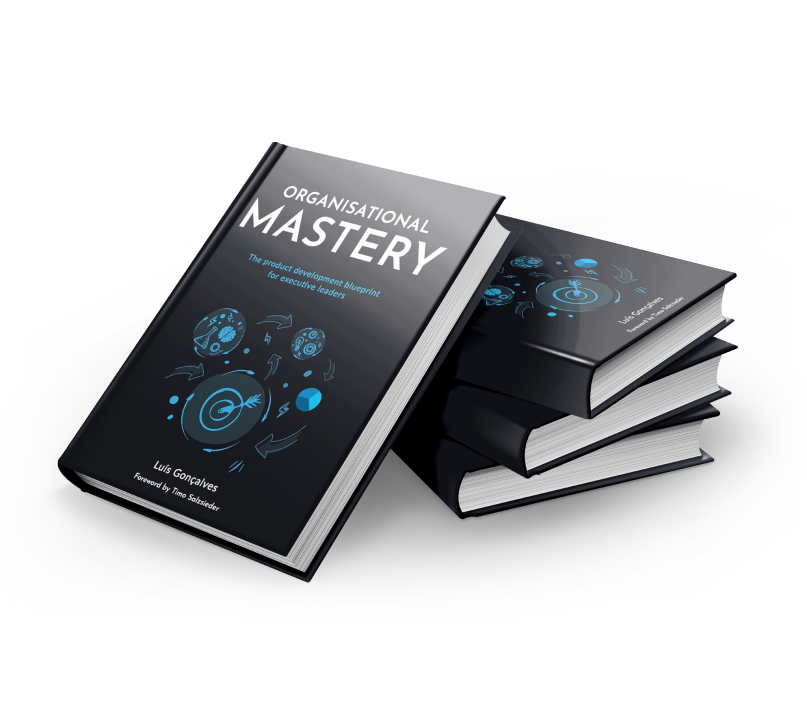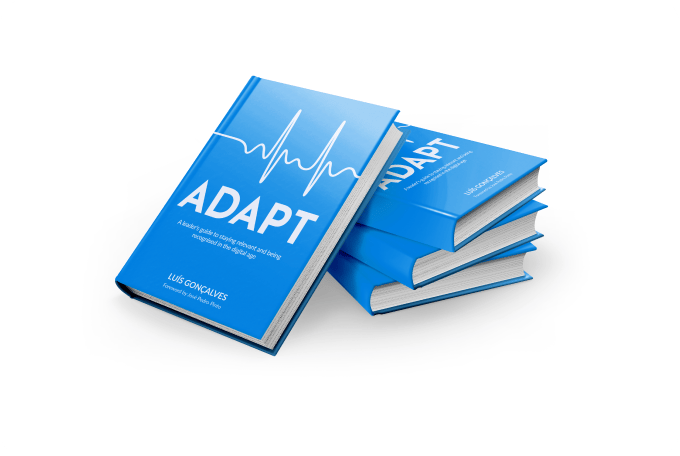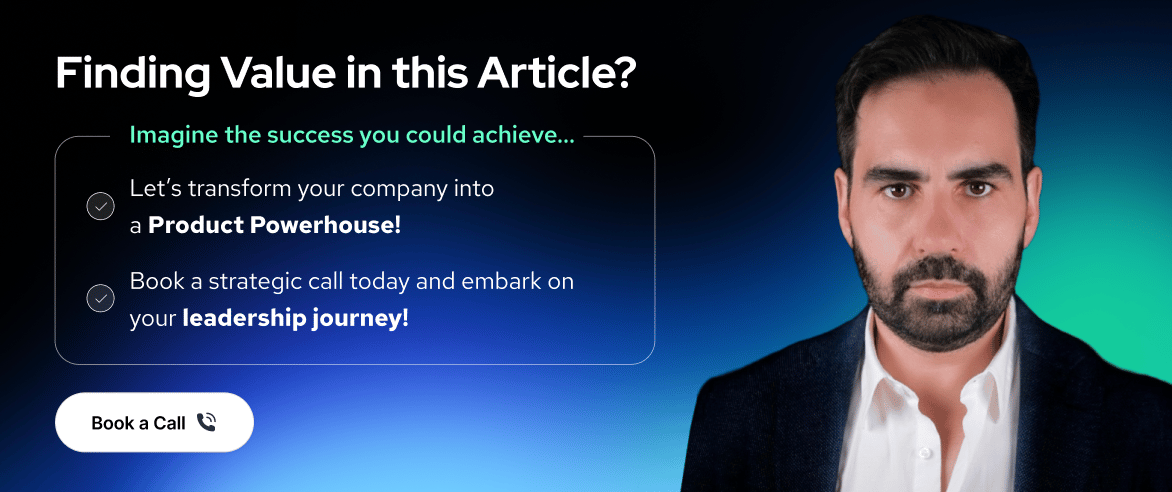Share this
Organisational Impediments: How To Effectively Manage Them
by Luis Gonçalves on Jan 13, 2024 5:24:01 AM
In the digital age, the pace of change is relentless. Organisations must be agile, adaptable, and continuously improving to stay ahead. Yet, many organisations are held back by Organisational Impediments that hinder their growth and potential. The ADAPT Methodology® offers a solution to this challenge, particularly within its Transformation pillar and the "Drive Continuous Improvement" sub-pillar.
Organizational impediments definition
Organizational impediments are internal barriers or obstacles that hinder an organization's ability to achieve its objectives, operate efficiently, or adapt to changing environments. These impediments can manifest in various forms, including outdated processes, bureaucratic red tape, cultural resistance to change, misaligned team structures, or even a lack of clear communication channels.
Addressing these impediments is crucial for any organization aiming to be agile and product-led.
They often lurk beneath the surface, subtly eroding efficiency, stifling innovation, and dampening employee morale. Addressing these impediments is not just about problem-solving; it's about unlocking the organization's full potential, ensuring smoother operations, and paving the way for sustainable growth and adaptability in an ever-evolving business landscape.
Efficient changes demand effective ways to implement them, this is where the Organisation Improvement Board steps in, a mandatory tool to manage Organisational Impediments. The organisational impediments board is a mandatory tool for every Digital Product Company.
Average-thinking executives settle for less. These are the people who believe that what isn’t broken shouldn’t be fixed. However, most organisations still have lots of potential and room for growth, and getting rid of the organisational impediments is one of the ways.
A ten-year-old company still has a lot to grow and with the right methodologies can achieve what a 20-year-old company has achieved in less time. Executives that fail to see beyond their horizon will only pull the company down. As an executive, your ability to spot room for improvement is a must. It is also essential that you are not the only person seeing these potentials.
Your company should be able to grasp how these seemingly minor corrections within your company can impact how you set the standard in your industry. Moreover, when you set the bar high enough for others to reach, that only means your company is winning. The question now is how you will implement these improvements and make your team embrace the changes. Here’s how to do it.
Organisational Impediments Board
The Organisational Impediments Board is a Kanban-style board designed to capture and manage these impediments in a structured and efficient manner. It serves as a visual representation of the challenges an organisation faces, allowing for a systematic approach to addressing them.
This board is not just a tool; it's a mindset shift. It moves away from the notion of "if it isn't broken, don't fix it" to a proactive approach to continuous improvement.
It's about spotting opportunities for growth, no matter how minor they might seem, and addressing them head-on.
Efficient changes demand effective ways to implement them. This is where Organisation Improvement Board (see the picture above) steps in. This contains the Agile Improvement Backlog. It refers to improvement topics that are found to be blocking and “impeding” an organisation.
It also applies to those improvement ideas which are seen as helpful ways for the company to become more innovative and faster in reaching its goals.
It will be the Agile Managers who are tasked with handling and solving each of the specified improvements. Their role is critical since the tasks will not be simple. This is because a majority of these improvements will require profound changes inside the organisation. However, this is the only way for a company to be considered Agile.
Roles Of An Agile Manager
Agile Managers have the responsibility of getting together with other managers as well as those that make up the organisation’s Senior Management. A considerable part of an Agile Manager’s job is to remove the topics that are part of the board.
An Agile Manager can assume a variety of roles in an Agile company. These roles have been identified as the following:
- Team Coach – In this role, the manager is tasked with coaching agile teams to help them achieve excellent results.
- Lean Action Taker – This role will require the manager to use lean thinking skills to help improve the organisational flow. As a result, teams can deliver value with no delay.
- Value Optimiser – As a value optimiser, an agile manager also manages the company’s project portfolio. He is deemed as a product owner although it is on a bigger scale. He continually asks himself, “What is the organisation’s top business value project?”
- Boundary Reinforcer – For this role, the manager must reinforce boundaries within the team as well as those boundaries between the group and organisation.
- Organisational Change Director – It is the role of the manager to act like one of those who guide the organisation toward Agile.
- Organisational Impediments Eliminator – By navigating through the organisation, the manager is tasked with removing all of the impediments which hinder the teams from delivering value to their customers.
Possible Improvements and the Hypothesis Kanban Board
There’s no doubt that organisations always have hidden improvements that if not addressed will impede their growth. However, they do not seem to have a way of bringing transparency to these improvements.
The Hypothesis Kanban Board is therefore created to allow an organisation’s teams and individual entities to develop possible enhancements and search for ways that can help in improving the whole organisation.
There are six different columns in a Hypothesis Kanban Board.
- Hypothesis – Under this column, the possible improvements will be expressed as a hypothesis. Whatever the team does, it will always begin with a hypothesis. They have no way of knowing if what they intend to implement will bring the desired results. Therefore, every move and decision that the team makes should be seen as a hypothesis. It follows a certain format:
- Implementing the change through hypothesis (We hypothesise by implementing this ___)
- Promising to find a solution to the problem (We will solve this ___)
- Foreseeing the benefits (Which will have these ___)
- Identifying the measurement type (As measured by this ___)
- Options – There are several possible ways for each hypothesis to be implemented. Teams have the responsibility to find out which option is easy to apply and can earn a considerable investment return.
- Selected – This refers to the option that the team has chosen for each of the hypothesis.
- Ongoing – This refers to the option that is being implemented currently by the team.
- Review – Every option requires a review which includes assessing whether the improvement was implemented successfully and the said improvement brought the desired result.
- Done – This column will indicate whether there was a success in implementing the improvement.
Board Visibility and Accessibility
It is essential that the board be made public. This will allow everyone within the organisation to access the board and see the ongoing improvements and initiatives. It will also allow them to see which items were solved as well as those which are coming in the future.
The board’s visibility and accessibility can bring a huge impact on an organisation. Some of its amazing results include: creating transparency; enabling continuous improvement; allowing managers to finally execute tasks within the organisation’s system; and paving the way for the creation of a learning organisation.
Implementation Process
Everything should be implemented in a manner that is deemed Agile. This can be done by organizing a team get-together every second week. In this gathering, the team reviews what has been achieved and plans what should be tackled in the coming weeks.
There is also a monthly get-together wherein the team would run an Agile Retrospective to analyze the various ways that they can improve. An Agile Retrospective refers to a meeting that is usually held at the end of each iteration found in Agile Development.
It is the type of meeting where the team assumes full ownership of the agenda as well as the outcome. It is a perfect opportunity for the team to pause for a moment and reflect upon the manner of their work.
Who Are the Team Members
The owners of the board will be predominantly the Agile Managers. They will be joined in the team by Senior Managers. An example of a senior manager is the Scrum Master who can be considered as the team’s COO.
Executive Management is also a part of the process. This will allow empowerment in the organisation which can bring improvements. Lastly, the person who speaks up about the issue must be considered as an integral part of the discussion.
This is because the person knows and understands all of the details that explain how the problem affects him as well as his team. Most often, this person is deemed as the Scrum Master.
Filling the Organisational Impediments Board With Topics
Treat the board as an average product backlog. Most standard Agile teams would consider talking with a product manager and using the same approach.
Find out the best person who can help in writing the hypothesis. Add this to the backlog. Always ensure that the process has a certain level of transparency that will allow you to gather feedback on your current hypothesis.
How Learnings Should Be Treated
There should be a place where you can store the results that you have gathered from the experiments. Remember that these results are highly essential for making future decisions in the organization. In other words, always treat these learnings with huge importance.
Communications Strategy
It’s also vital that everyone in the organization is kept informed or updated. One of the best ways to do this is by sending a monthly email. This email should have the following contents: achievements (improvements that were implemented), metrics, and results (what the team learned with the improvements)
If you’re an executive, who aims to set the bar high in your industry, feel free to reach out to see how we can activate your organisation’s highest potential.
Organisational Impediments Board in Project-to-Product Transformation
In the modern business landscape, the shift from a project-centric to a product-centric approach is more than just a trend; it's a necessity. As organizations embark on this transformative journey from project to product, the challenges they encounter are multifaceted and often deeply ingrained in their traditional operational structures. This is where the Organisational Impediments Board becomes not just beneficial, but mandatory.
The transition from project to product is not merely about changing terminologies or shifting team structures. It's a profound organizational change that touches every facet of operations, from strategy formulation to day-to-day execution. Such a transformation demands a clear understanding of existing bottlenecks, challenges, and areas of friction. Without a structured mechanism to identify, track, and address these impediments, organizations risk navigating their transformation journey blindfolded.
The Organisational Impediments Board serves as this guiding light. By providing a visual, structured, and accessible platform to capture and manage challenges, it ensures that the transformation journey is rooted in clarity and purpose. Every impediment, whether it's a legacy process, a cultural resistance, or a resource constraint, becomes a visible entity that can be systematically addressed.
Moreover, in a project-to-product transformation, the emphasis shifts from short-term goals and deliverables to long-term product value and customer-centricity. This shift demands a continuous improvement mindset. The Organisational Impediments Board fosters this mindset by ensuring that improvement is not a sporadic initiative but an ongoing organizational commitment.
The Organisational Impediments Board as a Catalyst
The Organisational Impediments Board, while a tool, plays a pivotal role in cultivating this culture. By providing a transparent, structured, and systematic way to capture and address impediments, the board does more than streamline problem-solving. It democratizes it.
When every team member, irrespective of their role or seniority, can see the challenges the organization faces and contribute to their resolution, it fosters a sense of collective ownership. It breaks down silos, encourages cross-functional collaboration, and instills a sense of shared purpose. This collective approach to problem-solving not only accelerates resolution but also ensures that solutions are holistic, well-rounded, and sustainable.
Beyond Tools: Cultivating a Mindset of Growth and Adaptability
While tools like the Organisational Impediments Board are invaluable, the real magic happens when organizations transcend tools and cultivate a mindset of growth and adaptability. This mindset is characterized by a few key attributes:
- Openness to Change: Embracing change as an opportunity, not a threat.
- Curiosity: Continuously asking 'why' and 'how can we do this better?'
- Collaboration: Recognizing that collective wisdom surpasses individual insights.
- Customer-Centricity: Ensuring that every improvement effort is aligned with delivering greater value to the customer.
Conclusion
The shift from project-centric to product-led is more than just a trend; it's a necessity in today's digital age.
As companies navigate the intricate path of project-to-product transformation, the Organisational Impediments Board is an indispensable tool. It ensures that the journey is not only successful but also sustainable, setting the foundation for a product-led future that is agile, responsive, and aligned with customer needs.
As organizations embark on this transformative journey, tools like the Organisational Impediments Board and the Hypothesis Kanban Board, underpinned by the principles of the ADAPT Methodology®, offer a structured, systematic, and sustainable approach to address challenges. By proactively identifying, addressing, and learning from these impediments, organizations can not only navigate the challenges of today but also position themselves for the opportunities of tomorrow.
Did you like this article?
We enable leaders to become highly valued and recognized to make an impact on the World by helping them to design Digital Product Companies that will thrive and nourish in the Digital Age, we do this by applying our own ADAPT Methodology®.
If you are interested in knowing if you have what it takes to design and build a great digital product company simply take our Digital Leadership Influence Scorecard.
If you want to know how we can help you to start your transformation please check out our: Training.
If you are interested in doing a transformation in your company please check out our: Consulting.
Share this
- Agile Methodologies (18)
- Product Strategy (18)
- OKRs (16)
- Scrum (16)
- Product Mindset (14)
- Project To Product (10)
- Agile Retrospectives (9)
- CoPs (9)
- Knowledge Sharing (9)
- Time To Market (8)
- Product Discovery (7)
- Continuous Improvement (5)
- Strategy (5)
- Scrum Master (4)
- Content Marketing Strategy (3)
- Product Owner (3)
- Technical Excellency (3)
- Digital Transformation (2)
- Innovation (2)
- Scaling (2)
- Team Building (2)
- Business Model (1)
- Cost Of Delay (1)
- Customer Feedback (1)
- Customer Journey (1)
- Customer Personas (1)
- Design Thinking (1)
- Digital Leadership (1)
- Digital Product Tools (1)
- Go To Market Strategy (1)
- Google Design Sprint (1)
- Lean Budgeting (1)
- Lean Change Management (1)
- Market Solution Fit (1)
- Organisational Impediments (1)
- Outsourcing (1)
- Product (1)
- Product Metrics (1)
- Product Roadmaps (1)

Organisational Mastery
Get your free copy

ADAPT
Get your free copy

Product First
Get your free copy



